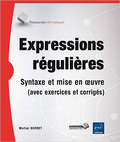Unix |
Unix v6 |
|
 |
ht(4) |
 |
ht RH-11/TU-16 magtape interface The files refer to the
DEC RH/TM/TU16 magtape. When opened for reading or writing,
the tape is rewound. When closed, it is rewound; if it was
open for writing, a double end-of-file is written first. A
standard tape consists of a series of 512 byte records
terminated by a double end-of-file. To the extent possible,
the system makes it possible, if inefficient, to treat the
tape like any other file. Seeks have their usual meaning and
it is possible to read or write a byte at a time. Writing in
very small units is inadvisable, however, because it tends
to create monstrous record gaps. The files discussed above
are useful when it is desired to access the tape in a way
compatible with ordinary files. When foreign tapes are to be
dealt with, and especially when long records are to be read
or written, the ‘‘raw’’ interface is
appropriate. The associated files are named Each or call
reads or writes the next record on the tape. In the write
case the record has the same length as the buffer given.
During a read, the record size is passed back as the number
of bytes read, provided it is no greater than the buffer
size; if the record is long, an error is indicated. In raw
tape I/O, the buffer must begin on a word boundary and the
count must be even. Seeks are ignored. An error is returned
when a tape mark is read, but another read will fetch the
first record of the new tape file. /dev/mt?, /dev/rmt? tp
(I) Raw I/O doesnt work yet. The magtape system is supposed
to be able to take 64 drives. Such addressing has never been
tried. These bugs will be fixed when we get more experience
with this device. If any non-data error is encountered, it
refuses to do anything more until closed. In raw I/O, there
should be a way to perform forward and backward record and
file spacing and to write an EOF mark.
 |
ht(4) |
 |





